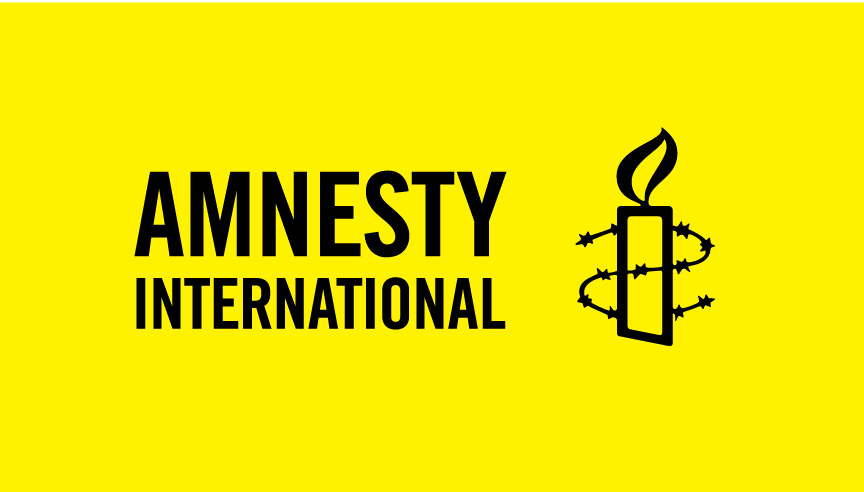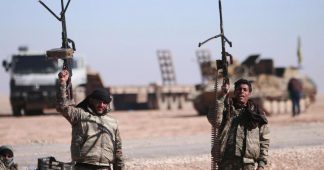By Bill Van Auken
Raising the specter of the Syrian conflict escalating into a military confrontation between the world’s two major nuclear powers, the Russian Defense Ministry Monday issued a warning that it would treat any US or allied aircraft operating in western Syria, where Moscow’s own forces, as well as those of the Syrian government, are based, as a hostile target.
The Russian warning came in response to the shooting down of a Syrian air force jet Sunday by a US Navy fighter plane over northern Syria, where US-backed proxy forces led by a Kurdish militia are advancing on the ISIS-held city of Raqqa.
Sunday’s incident marked the first time that a US warplane has brought down a Syrian plane flying over its own territory and represents a major escalation in the six-year-old US-orchestrated war for regime change. The Syrian pilot, last seen parachuting into an area controlled by the Islamic State of Iraq and Syria (ISIS), is still missing.
“In regions where the Russian Air Force is carrying out operations in the skies above Syria, any flying objects—including airplanes and drones of the international coalition—discovered west of the Euphrates River will be treated as aerial targets for tracking by land and air defense systems,” the Russian Defense Ministry warned.
Russia’s Deputy Foreign Minister Sergey Ryabkov described the US attack on the Syrian plane as “an act of aggression and a direct breach of international law.”
Moscow also indicated that it had cut off a “deconfliction” hotline with the Pentagon used to prevent unintended clashes between US and Russian fighter planes over Syria.
Washington delivered a series of conflicting responses to Russia’s warnings. The chairman of the US military’s Joint Chiefs of Staff, Marine Gen. Joseph Dunford, told the media that the Pentagon would be working “diplomatically and militarily in the coming hours to re-establish deconfliction.” Asked if he was concerned for the safety of US pilots flying over Syria after the Russian warning, the general responded that he was confident “our forces have the capabilities to take care of themselves.”
At a bizarre White House press conference Monday in which reporters were barred from either filming or recording answers to their questions, White House press secretary Sean Spicer was quoted as saying that Washington was “going to do what we can to protect our interests,” in Syria, adding, “We will always preserve the right of self-defense.”
Only the perverse logic of the US imperialist drive for hegemony in the Middle East and around the globe can explain the invocation of “self defense” for actions taken by US military forces in shooting down a plane flying over its own territory and attacking forces loyal to the existing government.
The shooting down of the Syrian jet follows a series of US acts of aggression against Syrian government forces. Last September, US-led airstrikes killed or wounded as many as 200 Syrian soldiers in the eastern province of Deir el-Zour. While the Pentagon subsequently claimed that the attack was a “regrettable error,” it provided air support for ISIS fighters to overrun a strategic Syrian government position.
Then in April, the US rained 50 cruise missiles on Syria’s al-Shayrat airbase, ostensibly in response to an alleged gas attack that had all the earmarks of a CIA provocation.
Within the last month, the Pentagon has carried out three separate airstrikes on pro-government forces that were alleged to have come close to a desert base near the al-Tanf southeastern Syrian border crossing with Iraq, where some 150 American special forces troops are training so-called “rebels” to prosecute the war for regime change against the government in Damascus.
With each new attack, it becomes ever more clear that the so-called anti-ISIS campaign being waged by US-led forces is a cover for an American military intervention aimed at securing the aims of the six-year-old war for regime change in Syria, the toppling of the Assad government and the imposition of a US puppet regime. To this end, the Pentagon is determined that territory wrested from ISIS remain under its control rather than that of the Syrian government. The clashes that led to the downing of the Syrian jet are bound up with this scramble for territory.
The campaign in Syria is part of the broader US drive toward war with Iran that was spelled out by US President Donald Trump in his trip last month to Tehran’s two major regional enemies, Saudi Arabia and Israel. The Trump administration’s turn toward an openly aggressive posture toward Tehran has served to further destabilize the entire region, with the Saudi monarchy, backed by Egypt and the UAE, imposing an all-out blockade tantamount to war against Qatar, which hosts the forward headquarters of the US Central Command, while at the same time depending heavily on revenues from a huge gas field it shares with Iran.
The threat of a wider war was further underscored by an Iranian missile strike directed against ISIS targets in the eastern Syrian city of Deir el-Zour. The missiles were launched from western Iran, some 370 miles away, flying over the territory of Iraq, whose government gave permission for the attack.
While Tehran justified the missile strike as a retaliation for terrorist attacks earlier this month claimed by ISIS in which 18 Iranians were killed and more than 50 wounded, Iranian officials made it clear that they were intended to send a wider warning.
“The Saudis and Americans are especially receivers of this message,” said Gen. Ramazan Sharif of the Iranian Revolutionary Guard Corps (IRGC). “Obviously and clearly, some reactionary countries of the region, especially Saudi Arabia, had announced that they are trying to bring insecurity into Iran.” Tehran has charged that the Saudis were behind the terrorist attacks. The Trump White House, meanwhile, issued a statement essentially blaming the Iranian government for bringing the terror on itself.
The threat that the US intervention in Syria can explode into a regional and even global war is exacerbated by the Trump administration’s ceding to the US military brass virtually all decisions as to the waging of Washington’s multiple wars, from Iraq and Syria to Afghanistan and beyond. Troop levels, rules of engagement and other essential policies are being set by a cabal of active duty and recently retired generals, including Defense Secretary James “Mad Dog” Mattis and Trump’s national security advisor, Gen. H.R. McMaster, together with commanders on the ground.
Sections of the military bitterly resented the Obama administration’s pulling back from a planned war against Syria in 2013, when in the face of overwhelming popular hostility to another Middle East war and deep divisions in the foreign policy establishment, Washington settled for a Russian-brokered deal to destroy Syria’s chemical weapons. Since then Russian and Iranian support have allowed the Syrian government to drive back the CIA-supported Islamist militias and retake virtually all of the country’s major population centers.
Reversing these advances is essential for the US to assert its dominance over the oil-rich Middle East. There are no doubt those within the US military brass who would welcome a confrontation with Iran and even Russia to achieve this end, regardless of the threat of a wider and potentially world catastrophic war.
Significantly, when reporters asked General Dunford Monday on what authority the US military was carrying out armed actions against the government of Syria, the Joint Chiefs of Staff chairman cited the Authorization for the Use of Military Force passed by Congress in the wake of the 9/11 attacks nearly 16 years ago.
There has been no debate, much less any vote, within the US Congress authorizing a war against Syria. The Democrats have raised no opposition to Trump’s giving free rein to the generals and have politically driven the hysterical anti-Russia propaganda campaign that is paving the way toward military confrontation.











